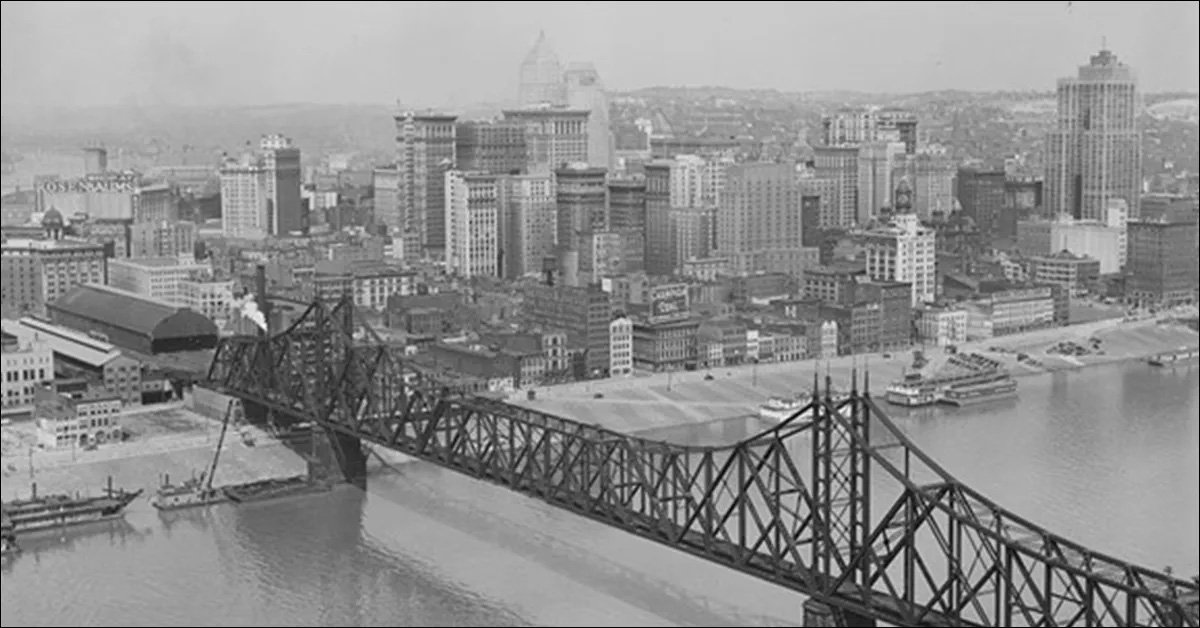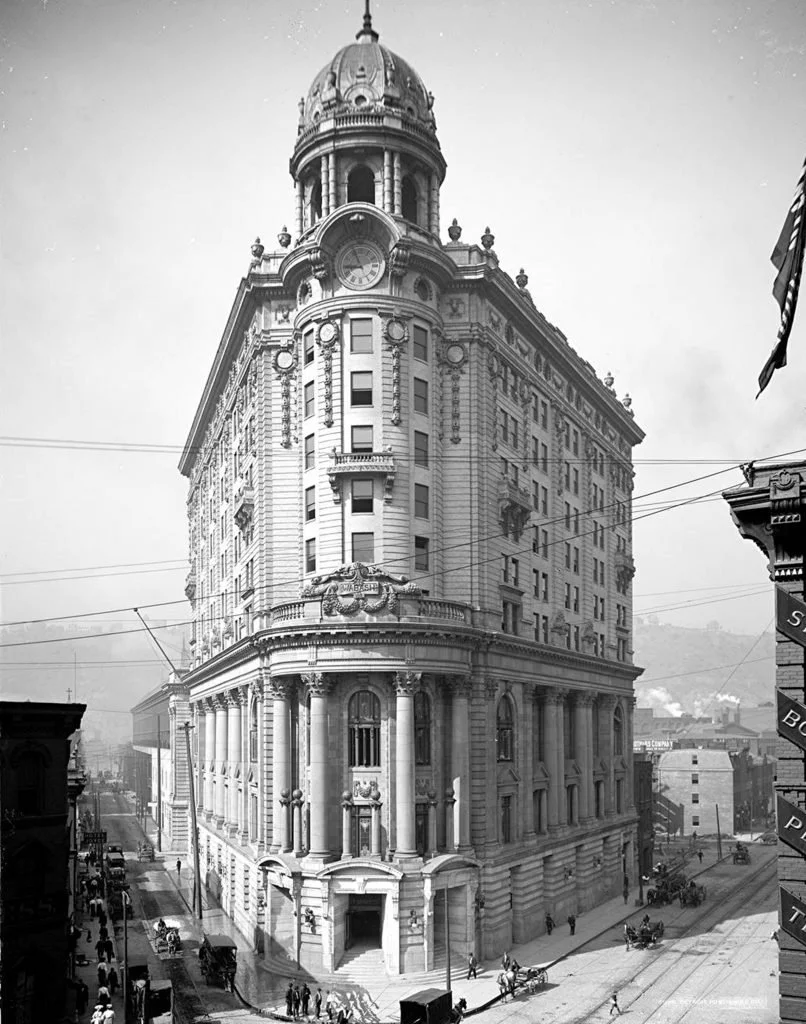What's With Those Piers On The Monongahela River?
Ok so we’re gonna start in Indiana in 1838 but we’ll end up in Pittsburgh by March 2021.
Alright, first we have the Wabash railroad. The railroad is named for the Wabash River, which flows from northwest Ohio into the Ohio River at the Illinois-Indiana border. Yes, this is the same Ohio River that flows east from Pittsburgh. Wabash is the anglicization of the French name for the river “Ouabache,” which is the interpretation of the native Miami tribe’s name for the river and means “water over white stones.” The earliest predecessor to the Wabash Railway is the Northern Cross Railroad in Indiana, which began operation in 1838. Without the Northern Cross, there is no subsequent chartered lines and renames. The Toledo, Wabash and Western Railway was formed on July 1, 1865, and was renamed in January 1877 to Wabash Railway.
Railroad baron and financier Jay Gould had substantial stock in Wabash by 1879 and subsequently was sold the remaining amount. In November 1879, Jay Gould merged the Wabash with the St. Louis, Kansas City & Northern to form the Wabash, St. Louis & Pacific, then a 1,400-mile rail network in the West.
Upon Jay Gould’s death in 1892, his son George J. Gould inherited the railroad empire in 1896 and sought to create a transcontinental rail system to move freight from coast to coast and acquired several railroad lines to fulfill that ambition. George Gould would need to build a connecting line through Pittsburgh to extend his rail empire to the East Coast.
This connecting line, to be named the Wabash Pittsburgh Terminal Railway, would run through Pittsburgh, which was an awesome center of industry and freight transportation, shipping more freight than any other city in the United States at the turn of the century. Gould assembled the line by acquiring several independent railroads, but still needed to construct two extensions – one that would connect western Pennsylvania to the Wheeling & Lake Erie Railroad in Ohio and another into a terminal in downtown Pittsburgh.
Construction began in 1900 on the initial westward 39.3 mile stretch of the Wabash Pittsburgh Terminal Railway from Pittsburgh towards the Wheeling & Lake Erie Railroad in Ohio. In September 1902, the southern and western portions were complete, which constituted several small bridges and trestles as well as the Greentree Tunnel and the Bigham Tunnel. The third tunnel, the Wabash Tunnel, was complete in 1903. The final phase of construction would be the large, elevated nine-track terminal complex.
Wabash Pittsburgh Terminal
Of course, to get to the terminal, which would be completed on July 4, 1904, Gould would need to construct a bridge to span the Monongahela River. In order to complete the bridge, the two sides from downtown and southside needed to be connected. On October 19, 1903, the carrier supporting the crane hoisting the beams broke and pitched into the river, ultimately claiming the lives of 10 men. The 812-foot span was the longest railroad bridge in the country at the time of completion in February 1904.
Wabash Bridge
Wabash Bridge Accident 1903
The troubles don’t end with the completion of the bridge and terminal, however. The Wabash is bankrupt four years later after Gould’s dream falls apart piece by piece, starting with the Western Maryland Railroad entering receivership in 1908. At this point, there is no traffic between Pittsburgh and Gould’s western railroads. After 1931, there is no passenger traffic in the downtown terminal, making the ornate building completely useless…so a radicalized form of angry air known as fire destroys the building in 1946. The Wabash bridge is pointless at this point, so it was dismantled and melted down for reuse in the Dravosburg Bridge downriver that was being built in 1948. The Dravosburg Bridge, officially named the W.D. Mansfield Memorial Bridge, still stands today. However, when the Wabash bridge is dismantled, the piers are left standing.
Buildings erected on the site of the former Wabash Terminal
The destruction of Wabash Terminal actually comes at an opportune moment by clearing space for Renaissance I and the Gateway project. First, the Bell Telephone Company of Pennsylvania Western Headquarters Building is built in 1957 where the original trainshed was located, followed by Gateway 4 in 1960 on the site of the original Wabash Terminal and then the Westinghouse Tower in 1969, where the line split to the train shed and freight station. The Bell Telephone Company of Pennsylvania Western Headquarters Building might be better known as the Verizon Building or 201 Stanwix luxury apartments when the building was converted to apartments in 2012. The building also houses the City Charter High School.
What’s important here is Westinghouse in 1969 and remembering that the piers are still standing. The Westinghouse Transit Expressway, better known as Skybus, was a public transportation initiative from the 1960s. Had the initiative been successful, the Skybus could have routed through the Wabash tunnel, across a new Wabash bridge, and delivered Westinghouse employees directly to the headquarters. However, the Skybus lost support over the 70s and, thus, was abandoned. In 1999, Westinghouse moved from their headquarters on Stanwix Street. As of March 3, 2021, the piers of the Wabash Bridge are for sale.





